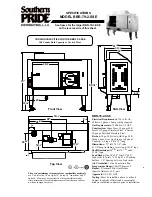
FIGURE 5: RECOMMENDED SMOKE ALARM MOUNTING LOCATIONS.
FIGURE 6: RECOMMENDED SMOKE ALARM LOCATION IN ROOMS WITH
SLOPED, GABLED, OR PEAKED CEILINGS.
The placement of the device is critical if maximum speed of fire detection is
desired. Thus, a logical location for an alarm is the center of the ceiling. At this
location, the smoke alarm is closest to all areas of the room.
WHERE SMOKE ALARMS SHOULD BE INSTALLED IN
MOBILE HOMES
In mobile homes built after about 1978 that were designed and insulated to
be energy-efficient, smoke alarms should be installed as described in the section
above.
In older mobile homes that have little or no insulation compared to today's
standards, uninsulated metal outside walls and roofs can transfer heat and cold
from outdoors, making the air right next to them hotter or colder than the rest of
the inside air. These layers of hotter or colder air can prevent smoke from
reaching a smoke alarm. Therefore, install smoke alarms in such units only on
inside walls, not more than 12 inches (30 cm) from the ceiling. If you are not
sure about the insulation level in your mobile home, or if you notice that the walls
or ceiling are unusually hot or cold, install the alarm on an inside wall.
Minimum protection requires one smoke alarm as close to the sleeping area
as possible. For better protection, install one alarm in each room, but first read
the LOCATIONS TO AVOID section of this manual.
LOCATIONS TO AVOID
Nuisance alarms are caused by placing smoke alarms where they will not
operate properly.
To avoid nuisance alarms, do not place smoke alarms:
In or near areas where combustion particles are normally present such
as kitchens; in garages
where there are particles of combustion in vehicle
exhausts;
near furnaces, hot water heaters, or gas space heaters. Install
alarms at least 20 feet (6 meters) away from kitchens and other areas
where combustion particles are normally present.
In air streams passing by kitchens.
FIGURE 7 shows how an alarm can
be exposed to combustion particles in normal air movement paths, and how
to correct this situation.
In damp or very humid areas,
or next to bathrooms with showers. The moisture
in humid air can enter the sensing chamber as water vapor, then cool and
condense into droplets that cause a nuisance alarm. Install smoke alarms at least
10 feet (3 meters) away from bathrooms.
In very cold or very hot environments, or in unheated buildings or outdoor
rooms,
where the temperature can go below or above the operating range of the
alarm. Temperature limits for proper operation are 40° to 100°F (4.4° to 37.8°C).
In very dusty or dirty areas.
Dust and dirt can build up on the smoke alarm's
sensing chamber and can make it overly sensitive, or block openings to the sensing
chamber and keep the unit from sensing smoke.
Near fresh air inlets or returns or excessively drafty areas.
Air conditioners,
heaters, fans, and fresh air intakes and returns can drive smoke away from smoke
alarms, making the smoke alarms less effective.
In dead air spaces at the top of a peaked roof or in the corners between
ceilings and walls.
Dead air may prevent smoke from reaching the device. See
Figures 5 and 6 for recommended mounting locations.
In insect-infested areas.
If insects enter a smoke alarm's sensing chamber, they
may cause a nuisance alarm.
Get rid of the bugs before installing alarms
where bugs are a problem.
Near fluorescent light fixtures.
Electrical "noise" from nearby fluorescent light
fixtures may cause a nuisance alarm.
Install units and fluorescent lights on
separate electrical circuits.
Never remove battery from the unit to silence a nuisance alarm.
Open a window or fan the air around the smoke alarm to remove the smoke. The
alarm will automatically turn off when the smoke in the air is completely gone. Do not
stand close to the smoke alarm. The sound produced by the alarm is loud because it
is designed to awaken you in an emergency. Prolonged exposure to the horn at a
close distance may be harmful to your hearing.
INSTALLATION 913 SERIES
CAUTION:
New Construction: DO NOT attach smoke alarm head until AFTER
sanding, painting, and other dust creating situations are finished and cleaned up.
MOUNTING: PLATE & ALARM
1. Remove the mounting plate from the back of the smoke alarm by rotating it
counter-clockwise until plate unsnaps.
2. Mount plate to either the wall or ceiling, see "Mounting Location" instructions. If
smoke alarm is to be placed on the wall, mount plate so the snap-in tabs are in a
vertical position.
NOTICE
: PLATE IS MARKED "THIS SIDE OUT" FOR PROPER MOUNTING.
FIGURE 7
550-0033
Page 9-4
FIGURE 5
FIGURE 6
3. To use the supplied screw anchors, drill two 3/16" holes, insert the screw anchors,
and mount the plate to wall using the supplied screws.
4. Place the smoke alarm up to the mounting plate, rotating it to about 10:00 o'clock
then rotate it clockwise to 12:00. It should "snap-lock" into place. Keep the smoke
alarm parallel to the mounting plate so upper and lower tabs on the plate seat
correctly into the smoke alarm.
























